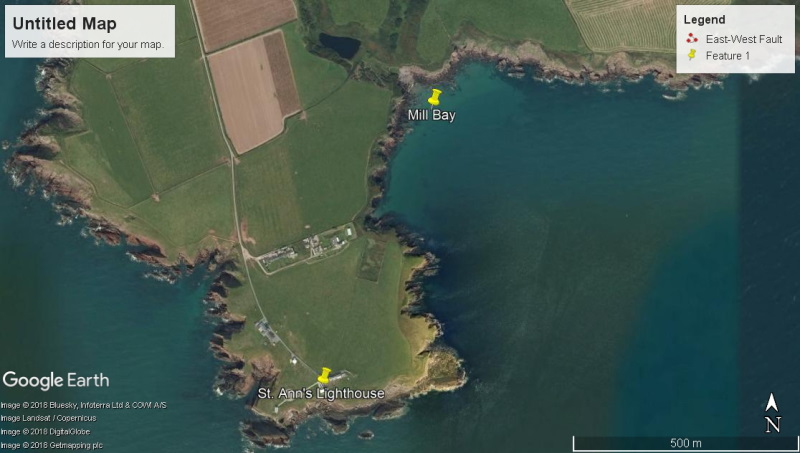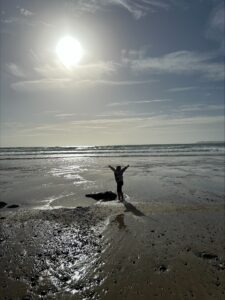The Mill Bay Disaster
Mill Bay is located just inside the entrance to the Milford Haven Waterway on the north side adjacent to St Ann’s lighthouse. For ships entering the waterway, it is necessary to pass Mill Bay to reach the sheltered anchorages of Dale and Angle Bays. Mill Bay has been the scene of a very large number of ship wrecks. One of these was the greatest disaster in sail ever within the Milford Haven Waterway and became known as ‘The Mill Bay Disaster’. It occurred on the night of Saturday 10th September 1866 (alternatively reported as November) when a ferocious gale was blowing from the south. A fleet of seven or eight large sailing ships were running before the gale in driving rain and poor visibility. They were making their way around the coast from the Bristol Channel. They attempted to enter the Milford Haven Waterway through the two mile wide entrance opposite St. Ann’s Head known as ‘The Heads’. The leading vessel was blown onto the rocks of the lee shore, in a small cove adjacent to the lighthouse landing jetty beneath St. Ann’s Head. The remainder followed the leading ship and became trapped in Mill Bay also on the lee shore. They were thrown by the boiling surf onto the rocks and wrecked. The first two ships, the ‘Alfred Eliza’ (a French vessel from Trouville) and the ‘Commodore’ (a barque bound for London with coal) were soon reduced to two broken hulls stranded high on the rocks.
The light-house keepers at St. Ann’s heard the cries of the stricken crews and hurried down the cliffs. They managed to save many men. One, a Cornish captain was thought to be dead but happily he revived. He was taken to Dale, where he recovered from his cuts and bruises. Surprisingly eight men managed to launch an open boat from one of the wrecks and reached Dale village.
Afterwards, the whole of the coastline from St Ann’s lighthouse to Dale Fort was strewn with debris from the ships and 10 bodies were also washed up. The wreckage identified the brigantine ‘King of the Forest’ (with a cargo of rail iron from Cardiff to Liverpool). Also identified were the two schooners ‘Isabella’ carrying coal from Neath to Plymouth) and the ‘Hope’ (from Poole on route to Swansea). The captain and boy from the ‘Hope’ were drowned. Nothing was identified from the two ships ‘Eliza and Mary’ and ‘Eglantine’, and it was assumed that they had sunk in deep water under the cliffs. The dead were taken to Dale and laid out in an outhouse on the south side of Dale churchyard before burial. The loss of life was considered very heavy.

Google Earth image of Mill Bay and St Anns Head


